MARIANI’S
November 27, 2005
NEWSLETTER
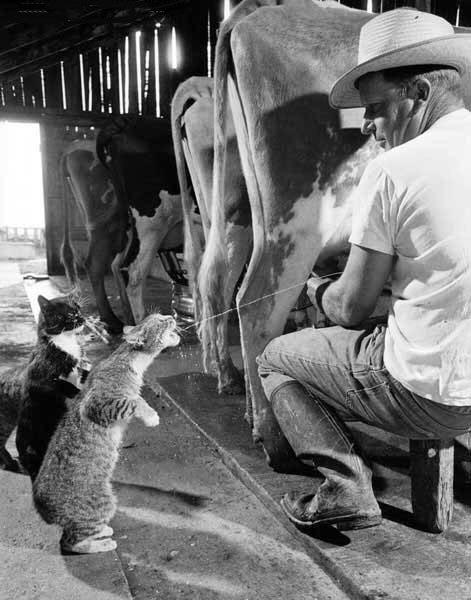
UPDATE: To
go to my web site, in which I will update food
&
travel information and help link readers to other first-rate travel
& food sites, click on: home page
ACCESS TO
ARCHIVE: Readers may now access
an
Archive of all past newsletters--each annotated--dating back to July,
2003, by simply clicking on www.johnmariani.com/archive
.
NEW
FEATURE! You may now subscribe anyone you wish
to this newsletter by
clicking here.
In
This Issue
NEW YORK CORNER:The Michelin Man Comes to New York by John Mariani
QUICK BYTES
______________________________________________________________________
THE BEST FOOD & DRINK BOOKS FOR GIFT GIVING
by John Mariani
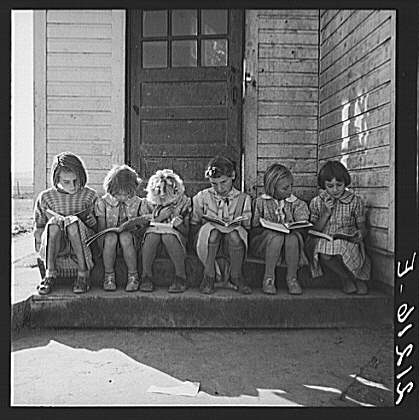
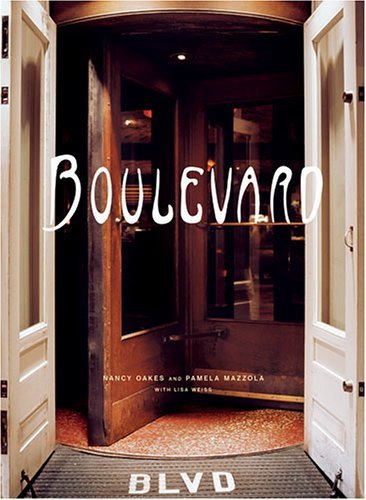
BOULEVARD: The Cookbook by Nancy Oakes and Pamela Mazzola with Lisa Weiss (Ten Speed Press, $50). A very large book and an expensive one, at $50, for only 75 recipes. But Boulevard has been one of the signal restaurants of the proto-San Francisco style, and chef/co-owner Nancy Oakes has given us dishes that never fly into the currency of extremism, instead showing how a dish like lobster tail with black pudding, blood orange juice, and potato mousseline can be a revelation without trying to be a sensation.
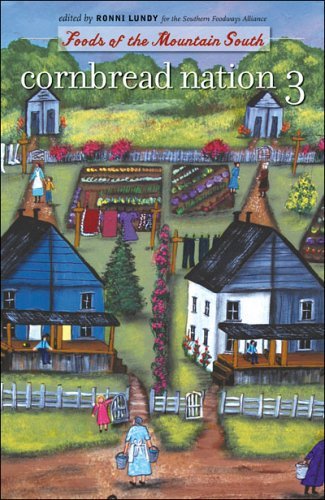
CORNBREAD NATION 3: Foods of the Mountain South edited by Ronni Lundy (
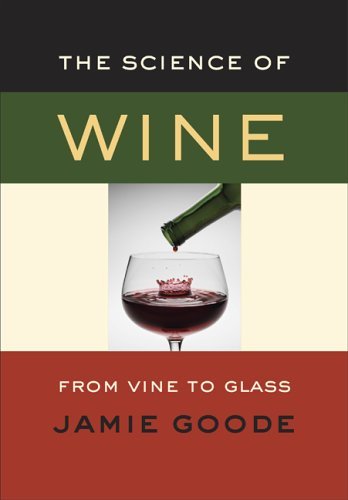
THE SCIENCE OF WINE: From Vine to Glass by Jamie Goode (
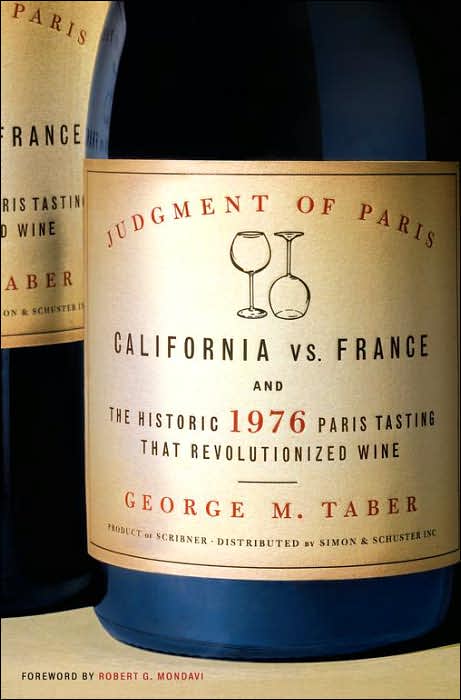
THE JUDGMENT OF
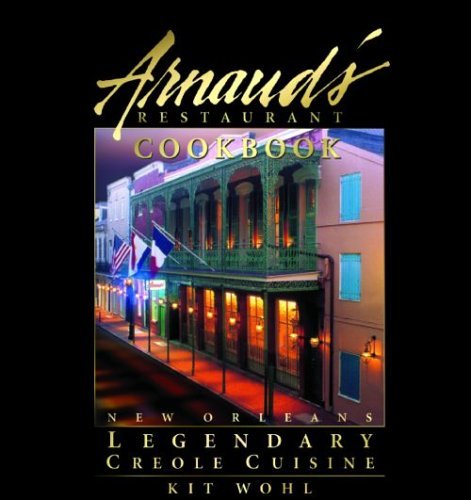
ARNAUD'S RESTAURANT COOKBOOK
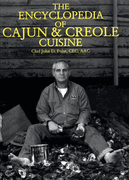
THE ENCYCLOPEDIA OF CAJUN & CREOLE CUISINE
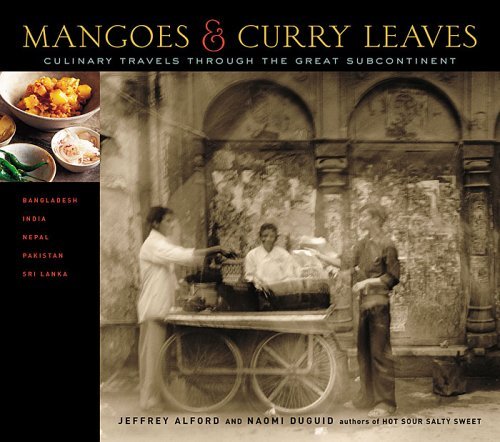
MANGOES & CURRY LEAVES: Culinary Travels through the Great Subcontinent
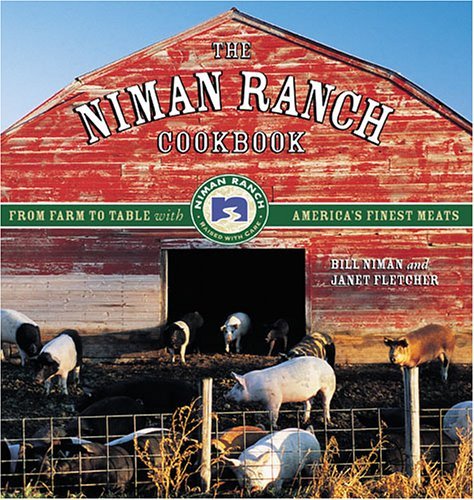
THE NIMAN RANCH COOKBOOK: From Farm to Table with
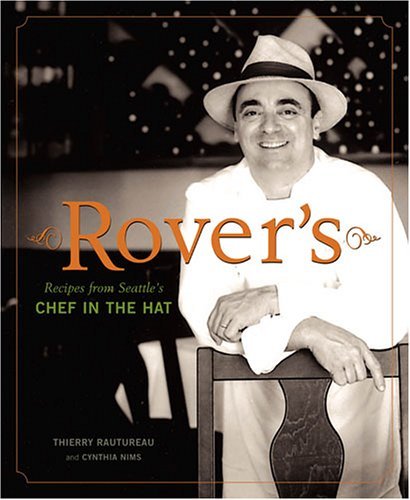
ROVER'S: recipes from Seattle's Chef in the Hat by Thierry Rautureau and Cynthia Nims (Ten Speed Press, $40). It's about time Thierry Rautureau stepped into the spotlight for he has long been one of the best and seminal chefs in the American Cuisine Movement. His restaurant in
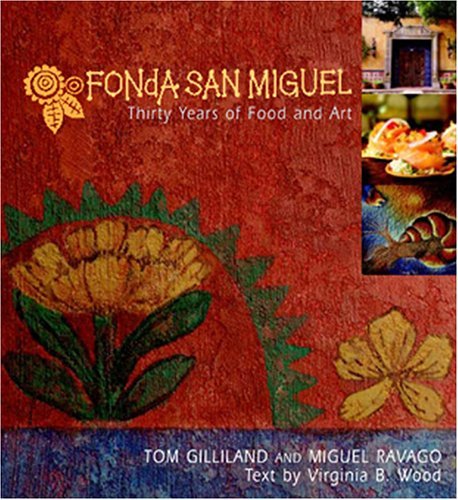
FONDA SAN MIGUEL: Thirty Years of Food and Art
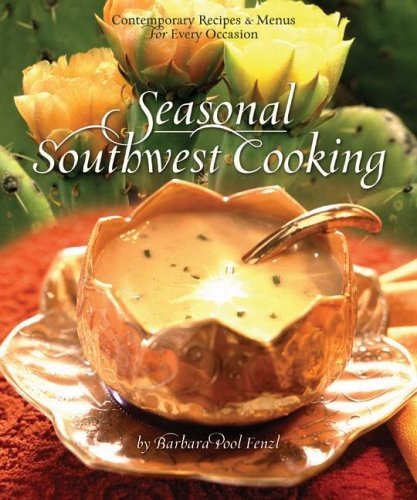
SEASONAL SOUTHWEST COOKING
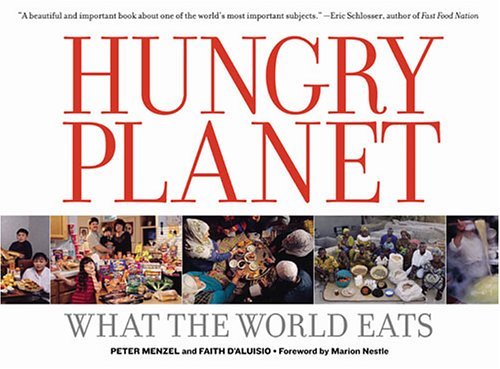
HUNGRY PLANET: What the World Eats
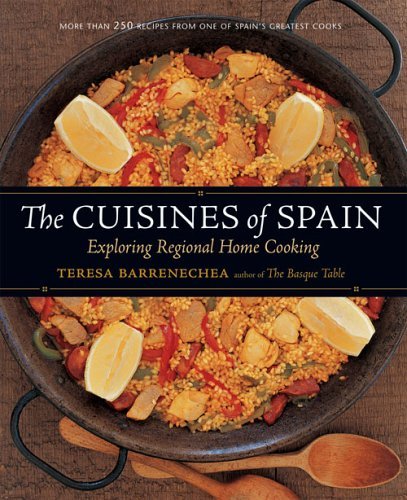
THE
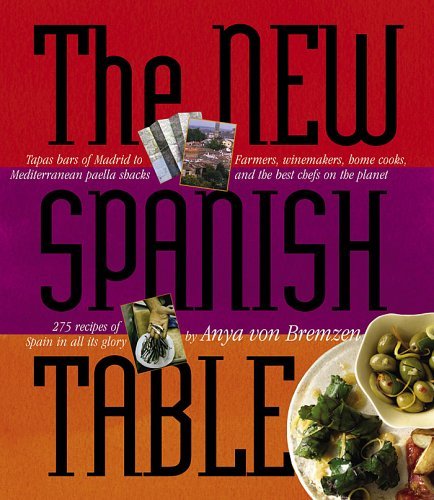
THE NEW SPANISH TABLE
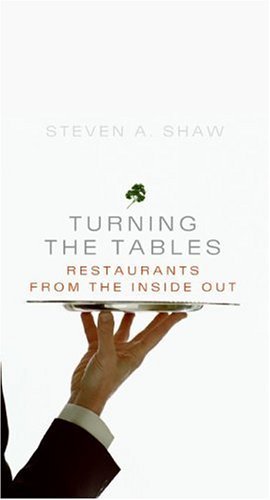
NEW YORK CORNER
The Michelin Guide Rates NYC
by John Mariani
T wo weeks ago the first-ever Michelin Guide to New York appeared, and foodies have buzzed about it since
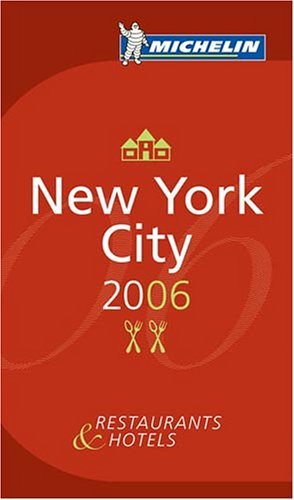 with varying
degrees of applause, disappointment, and condescension.
Many, including this writer, found grounds for elation
that finally
one guide is now out there to challenge the dominance (notice I did not
say
"eminence") of the Zagat Guides, which are compiled on the
basis
of votes,
not inspections.
with varying
degrees of applause, disappointment, and condescension.
Many, including this writer, found grounds for elation
that finally
one guide is now out there to challenge the dominance (notice I did not
say
"eminence") of the Zagat Guides, which are compiled on the
basis
of votes,
not inspections.As it does in Europe, where it publishes 12 national red guides, Michelin bases its ratings on anonymous visits by trained inspectors who may not even be known to one another. In most cases an inspector dines alone (not much fun), pays his bill, and makes his report. Another inspector follows up. If a restaurant seems to merit a star, other inspectors will visit, perhaps up to 12 visits, before a third star is awarded.
As in Europe, one star means “a very good restaurant,” two means “worth a detour,” and three “worth a journey,” the odd wording owing to the Michelin Tire Company’s originally issuing the guides a century ago to chauffeurs, who bought the tires and drove wealthy people in their limousines around France.
The NYC Guide rates 507 restaurants and 50 hotels. Of the restaurants, 463 are in Manhattan, two in Brooklyn, two in the Bronx, 13 in Queens, and four in Staten Island. Four received three stars, four two stars, and 31 one star; by comparison, Michelin's Paris ratings include 10 restaurants with three stars, 15 with two, and 58 with one, so New York comes off pretty well.
I interviewed the new director of the Guides several months before the NY Guide appeared. He is an ebullient, well-dressed Frenchman named Jean-Luc Naret (below), whom I found far more open in his discussion of the way the guides are put together than his predecessors, who maintained a ridiculous cloak of secrecy that would rival that of the Maqui in World War II. Here's what we talked about:
 What’s the job of a
Michelin Man like?
What’s the job of a
Michelin Man like?It’s not easy. They work full time. There are 70 of them in Europe, they dine alone, and they eat an average of 260 meals each year, checking out 15,000 restaurants and 30,000 hotels, of which 1,500 have stars.
Because there are no guidelines. We never tell a restaurateur to buy expensive china or silverware or gold toilet fixtures. We ask them to invest in nothing. We judge what’s on the plate, and the stars are not for the chef but for the restaurant. Of course, we take into consideration ambiance and service, but we are guided principally by five criteria: The choice of products, balanced flavors, the way ingredients are cooked, creativity, and consistency. The inspectors fill out a very intensive two-page report, then, if necessary a notable restaurant may be visited a dozen times by other inspectors.
How are the New York inspections going?
We began with five trained inspectors covering all the boroughs. At first they were all Europeans, but we added one New Yorker. In two or three years they will all be American. None of them will ever go back to the same restaurant for at least three years.
How is New York different from inspecting in Europe?
We have had to adjust a bit. Lunch menus are often very different from dinner menus here. We’ve had to adapt to the high noise level and the music in restaurants here. And some of our inspectors were surprised that in a top restaurant they turn the tables before you arrive and after you leave. In Europe the table is yours for the entire evening. But the stars will reflect exactly the same quality of food as do our stars in Europe.
What do you personally like about New York’s dining scene?
It’s so diverse. I love going for a great meal at a restaurant like Per Se or for sushi at Masa. But you also have great sushi bars uptown and downtown. I like to get a hamburger at the Parker-Méridien, and you have that wonderful—what is it called?—Soup Kitchen? I have even had some good food queuing up at a street cart for kebabs. I think people will be surprised that we have given serious consideration to types of restaurants we usually don’t cover in Europe—perhaps an Irish pub, a little Italian trattoria, certainly steakhouses.
Any problems with the inspections?
Well, we’ve had a tough time finding good restaurants in Staten Island. And we found you could get very good coffee in New York, even if it was served in a plastic cup.
Do the inspectors wear disguises?
Absolutely not! There’s no reason to because they are totally anonymous.
Have any been offered bribes after they reveal their identity?
Never. It simply has not occurred. Restaurateurs know about our integrity, and if an inspector ever did accept a bribe, he would be fired.
How do you treat a restaurant with a celebrity chef who may rarely ever be there? Or a restaurateur like Alain Ducasse who recently changed his chef de cuisine in New York because the NY Times demoted him from four to three stars?
As I said, we are looking at what’s on the plate and in the dining room. We are not looking beyond the kitchen door. We ask, is the personality of the chef being translated to the plate? It is different here, however, because a chef’s financial partner seems to have more say than in France about the running of the restaurant.
So what do you think of the Zagat Guides?
We’re a very different product for very different niches. We should be complementary, not at odds. We are famous for 105 years of anonymous inspections; Zagat is a survey of diners.
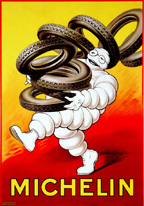
Will Bibendum, the fat Michelin tire man who is the company’s logo, be featured in New York, where he’s not well known?
Well, he will certainly be on the cover because he is our logo. But we will not give “Bib Gourmand” icons as we do in the French guide to indicate “an establishment offering good-quality cuisine for under 25 euros.”
Will there be any surprises in the New York guide?
Yes, I think there will be, more because of some restaurants people may not expect to get stars. But the most important surprise is that for the first time we are printing only two restaurants per page with a long text write-up, with map location, on the restaurant. In Europe we have eight listings on a page and only a one-sentence description. The New York Guide will be a pilot test for other U.S. cities and then Paris and London and the rest of Europe.
N ow that the results have been published, I commend Naret and his inspectors for doing a damn good, very thorough job, for a first attempt.
It was to be expected that this very French guide would favor very French restaurants (Plus ça change . . . .): Three out of the four three-star picks are decidedly French, run by French owners and/or chefs—Alain Ducasse NY, Le Bernardin (for a recent Virtual Gourmet review, click), and Jean-Georges, while the fourth, Per Se (click), run by Thomas Keller, is very French is spirit and, largely, cuisine. And two out of the four two-star restaurants, Daniel (click) and Bouley, are French. (The others are Masa [Japanese; click] and Danube [Austrian].

I am dismayed that of the four ***, only one—Le Bernardin—has a chef, Eric Ripert, who is consistently in his kitchen cooking (though he has become involved in a number of consultancies recently). Ducasse has indicated he really doesn’t cook anymore and has a dozen or more venues around the globe to tend to; Jean-Georges has as many, though he tends to stay in NYC as much as possible; Keller is in NYC about once a month, I’m told, for about a week.
Michelin’s ignoring such chefs' absenteeism is, I think, one of its chief faults. For while they say that they judge only what’s on the plate, surely the spirit and presence of the chef should count for something. Michelin’s top ratings suggest that there is no reason whatsoever for a chef or chef-owner ever to be on premises, despite the fact that these restaurants are among the highest priced in the U.S.
Also, if they are judging only what’s on the plate—and in the process insisting that restaurants need not have the most lavish of appointments, silverware, etc—why are the only restaurants to receive three stars restaurants with multi-million décor in the grand style? The NYC Guide does hedge a bit on this, noting that three stars "are given to the very best restaurants, where the whole dining experience is superb." It should also be noted that, after the inspections are finished, an inspector will ask to see the kitchen, right down to storage rooms--which is indeed admirable, but does call into question Naret's statement about judging "only what's on the plate" and not looking behind the kitchen door.
I have to wonder why there is not a single American or Italian restaurant in NYC deserving of three stars. The Guide becomes suspect when restaurants of such a high caliber as San Domenico, Chanterelle, Felidia, Eleven Madison Park don't even merit a single star, just as it is the case with Michelin’s guides to Great Britain, Spain, and Italy, where they find scant evidence of three- and two-star cooking. It is difficult to imagine why sterling restaurants like Union Square Café, Toqueville, TriBeCa Grill, Montrachet, The Sea Grill, and many others received no stars at all, when restaurants of dubious merit, like Vong, Etats-Unis, Annisa, and Saul, do.
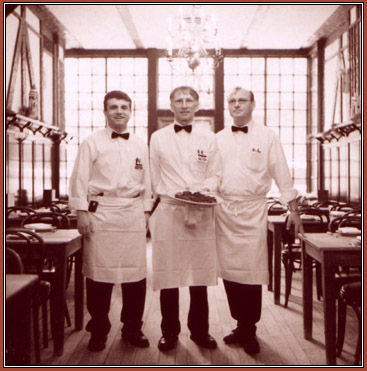 Two Michelin ratings stick out like sore
thumbs: Peter Luger (left)
and Spotted Pig (click). The
former undoubtedly serves the finest sliced porterhouse in NYC, hands
down. But
the rest of Luger’s menu is without glory; the side dishes are dreary;
the
bottled steak sauce horrible; the desserts nothing special; the
management
doesn’t always honor reservations; they take no credit cards; the
décor
is trashy; and
the wine list is atrocious. Yet it is
the only steakhouse in NYC to
deserve even a single star, despite the
excellence
of places like Smith & Wollensky, the original Palm on Second
Avenue, Ben
Benson’s, Michael Jordan’s, Strip House, and many others whose food,
service,
and wine lists dwarf Luger’s. The Luger rating simply doesn’t
make sense.
Two Michelin ratings stick out like sore
thumbs: Peter Luger (left)
and Spotted Pig (click). The
former undoubtedly serves the finest sliced porterhouse in NYC, hands
down. But
the rest of Luger’s menu is without glory; the side dishes are dreary;
the
bottled steak sauce horrible; the desserts nothing special; the
management
doesn’t always honor reservations; they take no credit cards; the
décor
is trashy; and
the wine list is atrocious. Yet it is
the only steakhouse in NYC to
deserve even a single star, despite the
excellence
of places like Smith & Wollensky, the original Palm on Second
Avenue, Ben
Benson’s, Michael Jordan’s, Strip House, and many others whose food,
service,
and wine lists dwarf Luger’s. The Luger rating simply doesn’t
make sense.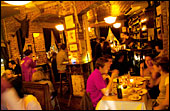
Spotted Pig (right) is another head-shaker: Here is a pleasant little corner bar in Greenwich Village, cramped and dark up front, loud beyond one’s ability to carry on a conversation, with only a few tables to the rear where the food is much better than you might expect from such a place, but certainly not stellar. Yet it, too, gets a star from Michelin, which may be its way of showing they can get down and funky.
My last caveat is that, in reading through the reviews of the restaurants, there is almost nothing negative in any of them. You simply don't read things like "you can safely skip dessert here," or "seafood is not the chef's forte," or "service can be brusque." Indeed, all the reviews, including those with no stars, are basically raves, which makes it tough to sort out the distinctions between a one-star and a no-star restaurant.
Nevertheless, I welcome Michelin to NYC and I sincerely hope the company will revamp its European guides along the lines of the NYC guide. Readers need more to go on than stars and symbols, and the NYC guide shows the direction they should go in.
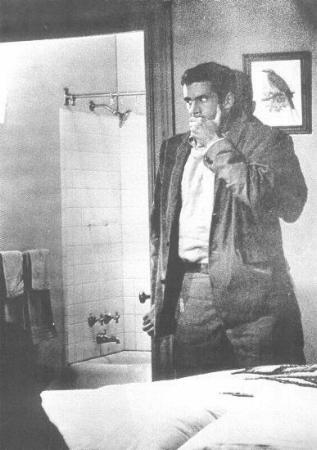
MORE THAN WE NEED TO KNOW IN A RESTAURANT REVIEW
"You may tell all who'll listen that what you really want out of life is oceanfront property in Maui, but the truth is, most of us are still knocking our brains out trying to please our mothers."--Hal Rubenstein, in a review of Centrico restaurant in New York Magazine (Oct. 17, 2005).

The owner of a shopping center in Orlando, FL, is suing a restaurateur who said he could not stay in the building because it is haunted by ghosts. The landlord offered to have an exorcism performed.
QUICK BYTES
* From Dec. 1-31 The Beau-Rivage Palace in Lausanne, Switzerland heralds the holidays with a “A Sybaritic Sojourn,” to immerse guests in a 5-day package of 12 treatments at its new Cinq Mondes Spa, incl. 12 treatments, including 80-minute Taoist, Balinese and Ayurvedic massages; Imperial Youthfulness Ko Bo Do Ritual; In-room massage on arrival; Rolls Royce Airport transfers; in room or buffet breakfast daily; Dinner at three restaurants of the Beau-Rivage Palace; Accommodations in a junior suite or a suite overlooking Lake Geneva and the French Alps. Call 011-41 21 613 3333; (www.brp.ch.) or 1-800-223-6800.
* On Dec. 21 the Hotel Bel-Air in
*
* Ashford Castle in County Mayo, Ireland, will offer a special New Year's package from Dec. 31-Jan. 2, with a third night complimentary on Jan. 2, incl. daily breakfast, mulled wine, welcome cocktail party, New Year's Eve dinner and dance in the George V restaurant, brunch and afternoon tea on New Year's Day, a treasure hunt, chamber music performance, a boating excursion on the Lady Ardilaun, access to golf, tennis and the Health Center, and more. Rates run from €950- €1250 ($1,119-$1.472), a 33% savings off the usual rates. Call 011-353-94-954-6003; From the U.S., 1-800-346-7007; www.ashford.ie
~~~~~~~~~~~~~~~~~~~~~~~~~~~~~~~~~~~~~~~~~~~~~~~~~~~~~~~~~~~~~~~~~~~~~~~~~
MARIANI'S VIRTUAL GOURMET NEWSLETTER is published weekly. Editor/Publisher:
John Mariani. Contributing Writers: Robert Mariani, Naomi
Kooker, Kirsten Skogerson, Edward Brivio, Mort
Hochstein, Lucy Gordan, Suzanne Wright. Contributing
Photographers: Galina Stepanoff-Dargery, Bobby Pirillo. Technical
Advisor: Gerry McLoughlin.
Any of John Mariani's books below
may be ordered from amazon.com by clicking on the cover image.
 |
 |
 |
 |
 |
 |
copyright John Mariani 2005